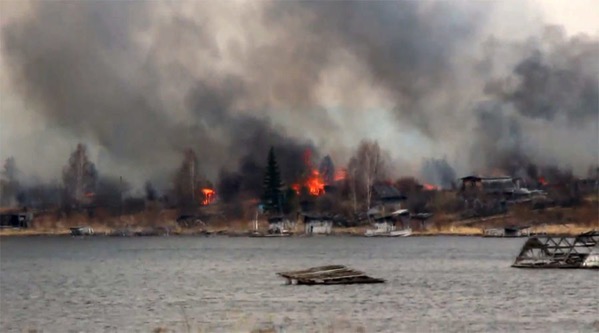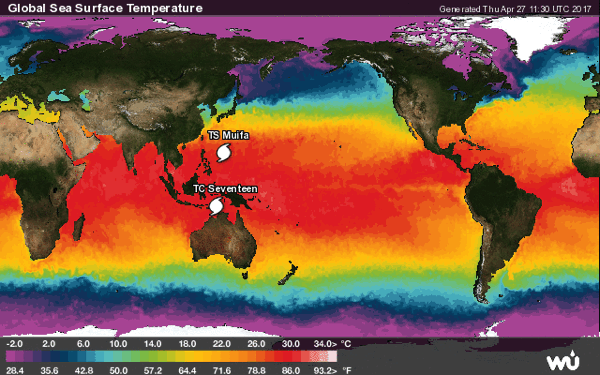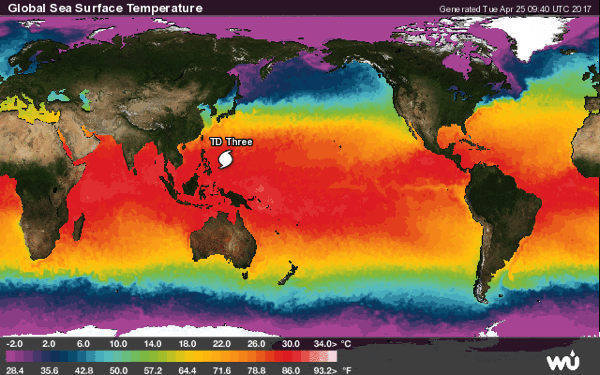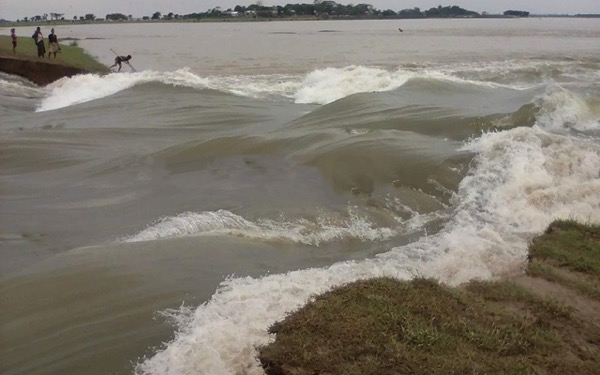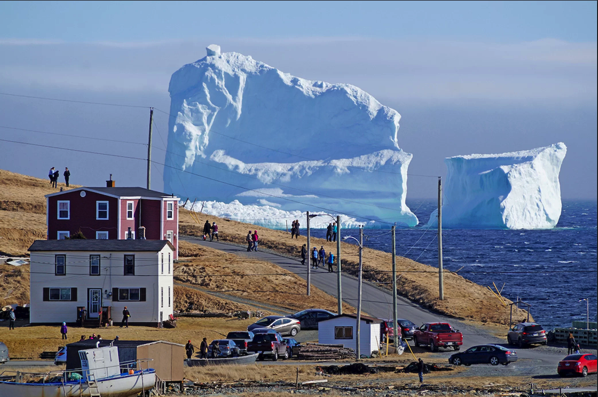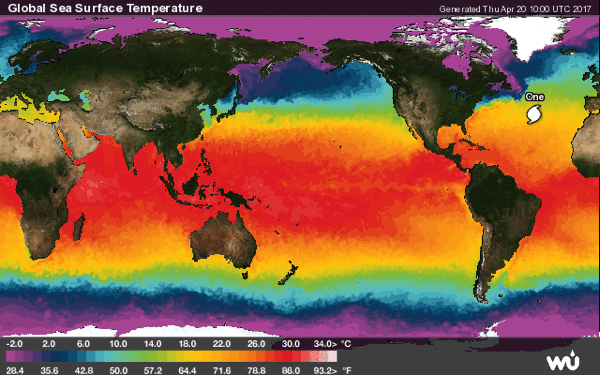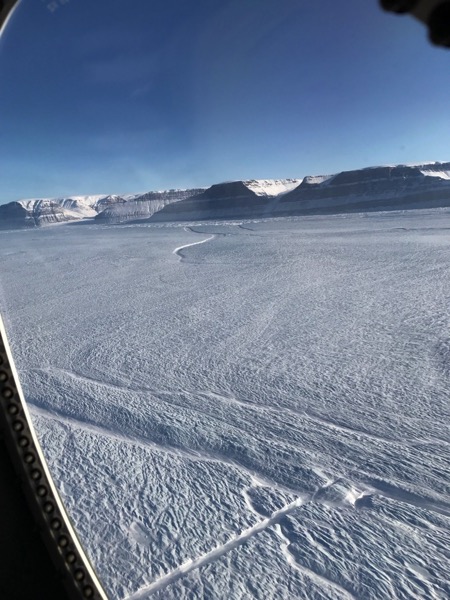Roundup of Global Volcanic Activity - Ongoing Activity for the week of 12 April - 18 April 2017
Bagana | Bougainville (Papua New Guinea) : Based on analyses of satellite imagery and model data, the Darwin VAAC reported that during 16-17 April ash plumes from Bagana rose to altitudes of 1.8-2.1 km (6,000-7,000 ft) a.s.l. and drifted N, SE, and S.
Bezymianny | Central Kamchatka (Russia) : KVERT reported that during 7-14 April lava continued to advance down the NW flank of Bezymianny's lava dome. A thermal anomaly was identified in satellite images daily. The Aviation colour Code remained at Orange.
Bogoslof | Fox Islands (USA) : Increased seismicity at Bogoslof was recorded by stations on nearby islands starting around 1501 on 15 April, prompting AVO to raise the Aviation colour Code to Orange and the Volcano Alert Level to Watch. The seismic activity subsided a few hours later; there was no evidence of renewed eruptive activity from infrasound, lightning, or satellite data during 15-18 April.
Colima | Mexico : On 14 April the Centro Universitario de Estudios e Investigaciones de Vulcanologia - Universidad de Colima reported that during the previous week seismic data revealed 48 high-frequency events, 30 long-period events, 3.3 hours of tremor, 10 landslides, and two explosions.
Dukono | Halmahera (Indonesia) : Based on analyses of satellite imagery, wind model data, and notices from PVMBG, the Darwin VAAC reported that during 12-18 April ash plumes from Dukono rose to an altitude of 2.1 km (7,000 ft) a.s.l. and drifted S, SW, W, and N.
Ebeko | Paramushir Island (Russia) : KVERT reported that during 7-14 April several explosions at Ebeko were observed by residents of Severo-Kurilsk (Paramushir Island) about 7 km E. Ash plumes rose as high as 2.6 km (8,500 ft) a.s.l. Minor amounts of ash fell in Severo-Kurilsk on 12 April. The Aviation colour Code remained at Orange (the second highest level on a four-colour scale).
Etna | Sicily (Italy) : INGV reported that the effusive eruption from a vent in the saddle between Etna's Southeast Crater (SEC) - New Southeast Crater (NSEC) cone complex ended during 8-9 April. During 10-11 April lava effused from a vent located at the S base of the SEC. The lava flow traveled SE and flowed several hundred meters down the W wall of the Valle del Bove. In the evening of 13 April short-lived explosive activity occurred at a vent at the S flank of the SEC cone at about 3,200 m elevation. That vent and another at 3,150 m elevation produced lava flows for a few hours. Lava also effused from the vent at the S base of SEC, 3,010 m elevation, during 13-14 April, traveling SE and down the W wall of the Valle del Bove on top of the flows from 10-11 April.
Kilauea | Hawaiian Islands (USA) : During 12-18 April HVO reported that the lava lake continued to rise, fall, and spatter in Kilauea’s Overlook crater. Webcams recorded incandescence from long-active sources within Pu'u 'O'o Crater, from a vent high on the NE flank of the cone, and from a small lava pond in a pit on the W side of the crater. The 61G lava flow, originating from a vent on Pu'u 'O'o Crater's E flank, continued to enter the ocean at Kamokuna. A growing lava delta is building where the lava enters the water. Surface lava flows were active above the pali.
Nevado del Ruiz | Colombia : Servicio Geológico Colombiano’s (SGC) Observatorio Vulcanológico y Sismológico de Manizales reported that at 1822 on 14 April a seismic event at Nevado del Ruiz was recorded, associated with a gas-and-ash emission recorded by the webcam that rose almost 1.2 km above the crater. The Alert Level remained at III (Yellow; the second lowest level on a four-colour scale).
Nevados de Chillan | Chile : The Buenos Aires VAAC reported that on 17 April a webcam recorded the ejection of incandescent material from Nevados de Chillán, and a possible ash plume that rose to 3.7 km (12,000 ft) a.s.l.
Sabancaya | Peru : Observatorio Vulcanológico del Sur del IGP (OVS-IGP) and Observatorio Vulcanológico del INGEMMET (OVI) reported that during 10-16 April seismicity at Sabancaya increased compared to the previous week, with an average of 37 explosions recorded per day. Ash plumes rose as high as 3 km above the crater rim (13 April) and drifted more than 40 km NW and SE. The Buenos Aires VAAC reported that on 17 April ash plumes rose to an altitude of 7.9 km (26,000 ft) a.s.l. and drifted SE. The next day ash emissions were recorded by the webcam. The Alert Level remained at Orange (the second highest level on a four-colour scale).
Sheveluch | Central Kamchatka (Russia) : KVERT reported that during 7-14 April lava-dome extrusion onto Sheveluch’s N flank was accompanied by strong fumarolic activity, dome incandescence, ash explosions, and hot avalanches. Satellite images showed a daily thermal anomaly over the dome, and an ash plume that drifted 82 km SW on 10 April. The Aviation colour Code remained at Orange (the second highest level on a four-colour scale).
Sinabung | Indonesia : Based on PVMBG observations, satellite images, and wind data, the Darwin VAAC reported that during 12-15 and 17 April ash plumes from Sinabung rose to altitudes of 3-4.6 km (10,000-15,000 ft) a.s.l. and drifted W, SW, and E.
Turrialba | Costa Rica : OVSICORI-UNA reported a passive ash emission from Turrialba on 16 April. An event at 0751 on 17 April generated a plume with minor ash content that rose 500 m above the crater and drifted SW. A diffuse plume consisting of gas and sometimes ash rose 1 km above the crater and drifted W on 18 April.



